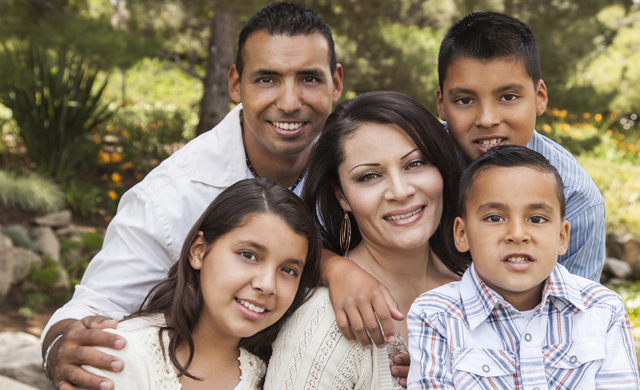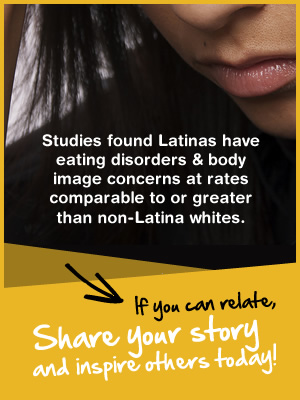
Therapy For Latino Families
01/29/2016 11:40AM | 11763 viewsAmong Hispanics with a mental disorder, fewer than 1 in 11 contact a mental health specialist. Many latinos don't access mental health services for simple reasons like working long hours, not having transportation or having to go to an unfamiliar part of town.
The signal sounds, and a small boy with bright eyes and dark hair pops out of the elevator and barrels into a downtown Manhattan office. He is trailed by his siblings and his mother, and they all seat themselves in separate corners of an airy waiting room. On a nearby bookshelf, the reading materials include "The Little Red Hen" and "My Visit to the Dinosaurs."
This Latino family is here for a therapy session. But this is not your typical therapist's office, nor is it your typical therapy program.
The family is here for their weekly meeting with a therapist as part of the Ackerman Institute for the Family's Latino Youth and Family Immigration Project: Dímelo en Espanõl. This is a program designed to help meet the specific mental health needs of Hispanic families, with a focus on "cultural competence."
Georgetown University's Health Policy Institute defines cultural competence as "the ability of providers and organizations to effectively deliver health care services that meet the social, cultural, and linguistic needs of patients."
Among health care providers, it is no secret that Latinos struggle to find help for mental health issues. While Hispanics are considered a high-risk group for depression, anxiety, and substance abuse, national studies show that Latinos access mental health care at lower rates than other demographic groups. Among Hispanics with a mental disorder, fewer than 1 in 11 contact a mental health specialist, reports the National Alliance on Mental Illness. Even fewer Hispanic immigrants seek mental health services.
Silvia B. Espinal, 32, was inspired to co-create the Project in part based on her personal experience. "I am originally from Peru and I came here when I was 16," she said. "I learned English quickly, so I would be the helper, the translator, the facilitator for my mother. Although this worked for my family, for many families this kind of role change between parents and child can create an unsettling new dynamic," she adds. "A parent might feel disempowered, and children can take on adult responsibilities."
"In our therapy sessions, we want families to see that children can help out during transitional periods," Espinal said, "but also that it doesn't take away from respect or from family roles."
The Project was launched in Fall 2014, and serves families from New York City and the surrounding area. Clients typically learn of the program though city agencies, through referrals from community organizations, or through the Project's webpage. The therapy sessions are conducted in Spanish, and payments are made on a sliding scale based on income. Most importantly, no family is ever turned away because of inability to pay.
Erika Sosa-Klein, 35, who co-created the project with Espinal, notes that mental health care still carries a sigma for many Latinos. "In our communities, we are used to dealing with our problems in a different way. You don't air your dirty laundry with a stranger," she said, "or you go to God, you pray, you light candles. We have our own coping rituals… But what we stress to our clients is that you can do all those things and come to therapy. It doesn't have to be one or the other."
Both Espinal and Sosa-Klein are licensed clinical social workers who participated in the Ackerman Institute's Social Work and Diversity Program while earning their Master's degrees. They say that the challenges their clients face include immigration, assimilation, acculturation, and behavioral issues.
Such problems are acute among under-served populations like Latinos. According to Dr. Sergio Aguilar-Gaxiola of the School of Medicine, University of California Davis, the barriers to Latinos receiving mental health care can be summed up by what he calls "The Five A's" - accessibility, availability, affordability, appropriateness of services, and advocacy. The interplay of these factors can determine whether Hispanics seek out and successfully obtain therapy and mental health care.
"The ability of Latinos to get mental health care can come down to very simple things," Aguilar-Gaxiola said. "For example, Latinos tend to work long hours, often on weekends, so for some people going to see a therapist means losing a day of work. Or for many Latinos, going to a therapist means going to the other side of town, to an unfamiliar place outside of their community. And when they do make it into a therapist's office, sometimes there are language and cultural issues and then they give up." As a result, he explains, some Latinos will wait until there is a crisis situation before they access mental health care - and such care (usually in an emergency room) comes with little or no follow-up.
This is the type of scenario that the Latino Youth and Family Immigration Project hopes to prevent.
"I am very attuned to the experiences that these families are having, so I try to help normalize the experience for them," said Espinal. "I see kids who are confused by the realities of their families' immigration issues, and parents who are worried about their children not doing well in school. I think that when they can speak Spanish, in a safe environment, with no judgments, there is something that feels less heavy to them, so they can go on with their lives."
So far, response to the Project has been favorable. "We are really committed to filling a need in the community for therapeutic services, said Lois Braverman,President and CEO of the Ackerman Institute for the Family. "And this particular project really filled that need for families who have a recent immigration experience, who have a teenager that is struggling or in trouble in some way, or who needs therapeutic services in Spanish." She hopes that the Project can develop "best practices" that are successful with Latino families, and then use these guidelines to train other therapists.
One of the unique features of the Project is that families meet with their therapist while another therapist monitors the group from behind a one-way mirror. With the consent of the families, this allows for an additional voice in the therapy process. The observer can even contact the therapist by phone to make suggestions on how to improve the session in progress.
Espinal stated that her clients are a source of strength to her. "I stay hopeful because these families are inviting us into their world. It is very admirable that, despite the odds, they are raising their kids, they are keeping food on their table, a smile on their face," she said. "They are very resilient people."
"For me, the most rewarding part (of this job) is that this is where my heart is," added Sosa-Klein. "I love being able to work with these families - this could have been my family. But the rewarding part is that we work with them, listen to them, and we don't tell them what to do. We come up with solutions together."
Back at the Ackerman Institute, about an hour after their arrival, the young boy, his siblings, and his mother emerge from their therapy session. This time they walk together in a group, the boy tugging his mother's hand. They press together as the elevator arrives, leaning into each other and giggling - looking like a happy family.











Post your Comment
Please login or sign up to comment
Comments